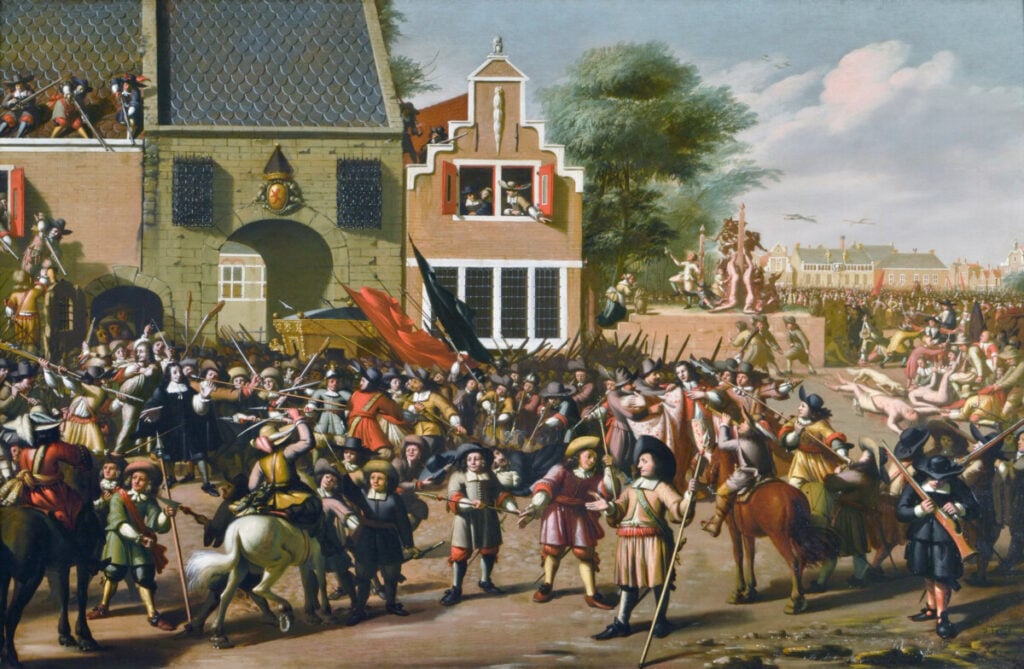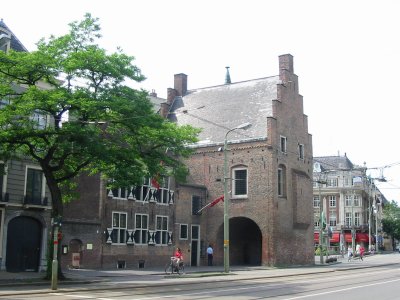The Dutch may seem civilized now, but anyone with some knowledge of European history knows that was not the case in the past.
Europe, including the Netherlands, was not an easy place to live in, as it was filled with wars and conflicts, assassinations and in general a complete geopolitical mess.
One story from the past that best exemplifies this is the tragic story of Johan de Witt.
Historical background
Back in 1672, the Netherlands, which was at the time the Dutch Republic, was engaged in war with England and France. Johan de Witt was the prime minister of the country at the time, and many in the country were disappointed with his leadership and wanted the famous William of the House of Orange-Nassau to take control. The year is also known as the disaster year in Dutch history, or Rampjaar.

The House of Orange was at the time the closest the Republic hard to a royal family. On the other hand, Johan de Witt, alongside a strong and wealthy merchant class, represented republican interests.
With the pressures of the attacks from the French and English forces, the Dutch were undeniably in a stressful position.
The (violent) downfall
On June 21 of the same year, an assassin stabbed De Witt, hurting him gravely. He then resigned from his leadership position, but that was not enough for the people conspiring against him. His brother Cornelius was arrested for treason and tortured. As it was the custom at the time, torture was just a normal part of prison back then, in order to extract a confession. Sure, it did not really matter if the confession was true or not, as long as the person confessed. All of these events occurred in The Hague, in a prison now turned museum (more on that later).
Cornelius, being a strong lad and also not really conspiring against his own brother, refused to confess. He was sentenced, however, to exile. Johan went to the prison to help out his brother on the start of the trip. As they both departed, they got captured by a militant mob, which shot both of them, and then left to the crowds. The crowds did what crowds do best, namely lose all semblance of sense or sanity. They were stripped naked, mutilated, and according to some reports, had their livers removed and eaten. C’est la vie, c’est la guerre, as the French say.

It’s important to note that back in the days of public lynchings, crowds always liked to pick a souvenir. Maybe pop some teeth off and put them in your pockets, or perhaps a finger. Heck, why not be a legend and take the whole arm? Sure, eating the liver sounds a bit intense, but hey, war makes people do desperate things.
It’s unknown if William of Orange was involved in the assassination or not. Whatever the case, he wasn’t the one eaten by a crowd, so for him, it must have been an overall success.
In any case, nowadays, curious visitors can go to the prison where Cornelius was tortured. It’s called Gevangenpoort, and it’s a museum, part of it dedicated to its glorious prison days and part of it a refurbished art gallery. It’s situated right next to the square where both the brothers were killed, and you can even find a commemorative statue of Johan de Witt there, in a more dignified state than in his last moments.

Have you heard of this classic historical Dutch story before? Let us know in the comments!
Feature Image: Hague Historical Museum/Wikimedia Commons
The post Dutch history: that time when the crowds ate the prime minister appeared first on DutchReview.
Source: dutchreview.com

Комментариев нет:
Отправить комментарий